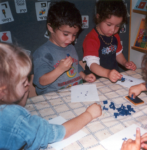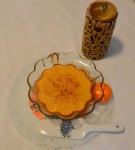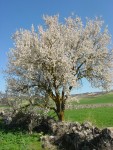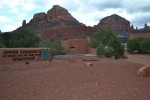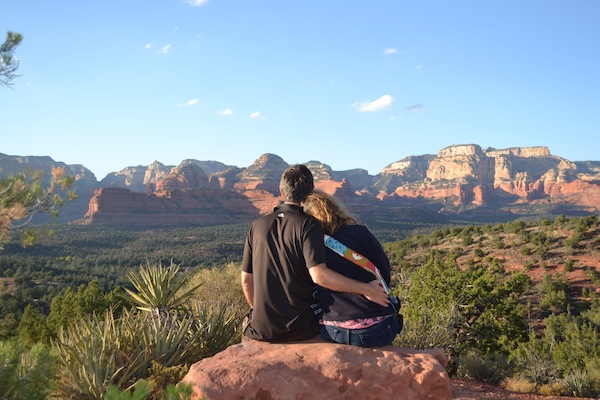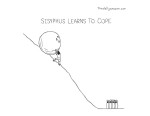Prof. Dorit Aram noticed that young children, prior to going to school, long to write. (photo from Dorit Aram)
According to a recent research from Israel, learning to recite the alef bet alone does little to help children advance their literacy – children should be learning to write, and before they even enter the school system.
The team’s lead researcher, Prof. Dorit Aram, maintains that longstanding misconceptions are getting in the way of children’s abilities.
Aram teaches at Tel Aviv University’s Jaime and Joan Constantiner School of Education specializing in adult/child early interactions and their relationship to children’s early literacy and social-emotional adjustment. The research was conducted in collaboration with colleagues at American universities and was published last year in Early Childhood Research Quarterly.
“My research started with children that come from lower socio-economic backgrounds,” said Aram. “What we see is that there are gaps between children in terms of their reading and writing achievements.”
As reading and writing are key to children’s academic success, Aram “was interested in how parents could promote their children’s literacy, in particular those from lower socio-economic backgrounds.” This particular study, however, looked at a group of ethnically diverse, middle-income preschoolers.
Aram began studying literacy with one of the leading early literacy researchers in the world, the late Dr. Iris Levin, working with her, examining children’s early writing development. Levin was a developmental psychologist at the School of Education at Tel Aviv University. She passed away in 2013.
“People are so busy with reading,” said Aram, “but considering young children, in particular, I felt writing was even more fascinating than reading, because it’s more active in its communication.”
Aram noticed that young children, prior to going to school, long to write. She recalled a child asking his father how to write a word, in one case. The child’s father gave him the letters, and Aram was left to wonder, “Did the father know he was really mediating, ‘scaffolding,’ his child’s early literacy?”
Aram began studying such interactions to determine ways in which a parent can “scaffold” his/her child’s understanding of the writing system, help them segment a word into its sounds, connect the sounds with the letters, and understand how to build words.
“I saw in my research that the more the parents help the child understand that written language is really symbolizing the spoken words, and that … when the parents really encourage the children to segment the word into its sounds and then retrieve the letters, the more the parents did it (this is what we call the graphophonemic mediation) … the children were doing better,” said Aram.
Working with children in preschools, Aram discovered that teachers were reluctant to work with kids on their writing literacy. “In the beginning, it was difficult for them because they connect writing to school and felt like they were taking away from the kids’ childhood,” she explained. “They’d say, ‘Well, these kids will have so much writing in school. Why do we have to bother them with writing now?’”
According to Aram, the teachers were not considering the possibility that the kids might want to be able to write out the names of their friends, their telephone number, or how they feel.
“Then they saw it’s not against the preschool spirit, that it can fit very well with it,” she said. “And because they were practising letters and phonological awareness, these things were part of their early literacy curriculum anyway.
“The teachers were unaware that you can combine it and have kids write. And, the writing makes the children happy, because they’re doing something meaningful – allowing them to do more than just practise letters, allowing them to really communicate.”
Aram and her team worked with children as young as 3.5-years-old on writing and letter knowledge, graphophonemic understanding, and early writing – not with a pencil, but with magnetic letters or stickers, for example.
“We saw that it worked beautifully,” said Aram. “These children did very well at the end of our intervention year, and it even predicted their achievements and the pace of their development the year after.”
According to Aram, the key is helping the child segment the different letters and the sounds they make. In her research, Aram has found that kids who were taught to connect a letter with the sound the letter makes progressed more than the other groups.
“What amazed us was that the children who received feedback – like so many children of American parents do – by just giving the children the names of the letters, it didn’t help the kids. It was just as good as saying to the kids, ‘Write this word again,’ without any feedback.”
The technique is more challenging to teach in English than in Hebrew, said Aram. However, she added, “From the studies done in English, we found it is still very useful to segment the word into sounds and connect sounds with their letters. Also, to motivate children to write and to respect their writing, even if it’s not 100 percent.”
About English, she explained, “If you think about Italian or other Romance languages, English took all the ‘difficulties,’ and it’s so difficult to see the connection between sounds and letters.”
But that shouldn’t stop parents and teachers from introducing writing into the kids’ daily lives. “For example, if you want, you can send emails, you can [help them] send a ‘Hi Daddy, I love you’ note … or you can write what you want to eat tomorrow, just little things – a word here, a word there.”
Aram noticed, on her visits to North America, that many homes in the United States and Canada have magnetic letters on their fridges. She suggested, “Instead of just naming the letters, write [a] word and do things that are meaningful. Letters, by themselves, are less meaningful. But writing is for communication and writing is meaningful…. It doesn’t have to mean you do a lot of writing, just two words here or there, a sentence here or there – that makes a huge difference, and children love it.”
Rebeca Kuropatwa is a Winnipeg freelance writer.

